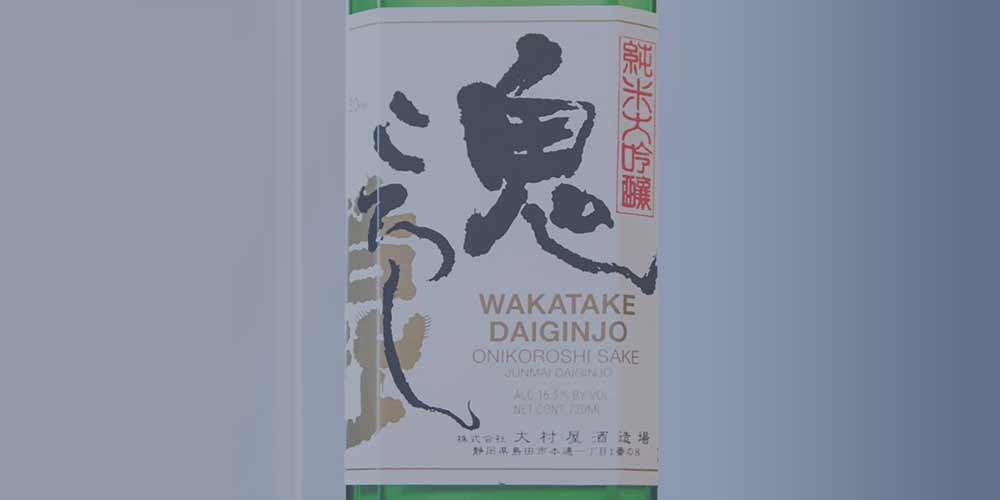Last Updated 2/10/2021
Wakatake Onikoroshi is one of the most famous sake brands today. Information about this secretive brand is hard to come by, however.
This post takes a deep-dive into the three most popular sakes under the Wakatake Demon Slayer brand. You’ll find tasting notes, service and pairing recommendations, and sponsored links to online retailers that deliver.
Wakatake Onikoroshi
Wakatake Onikoroshi
Wakatake Onikoroshi
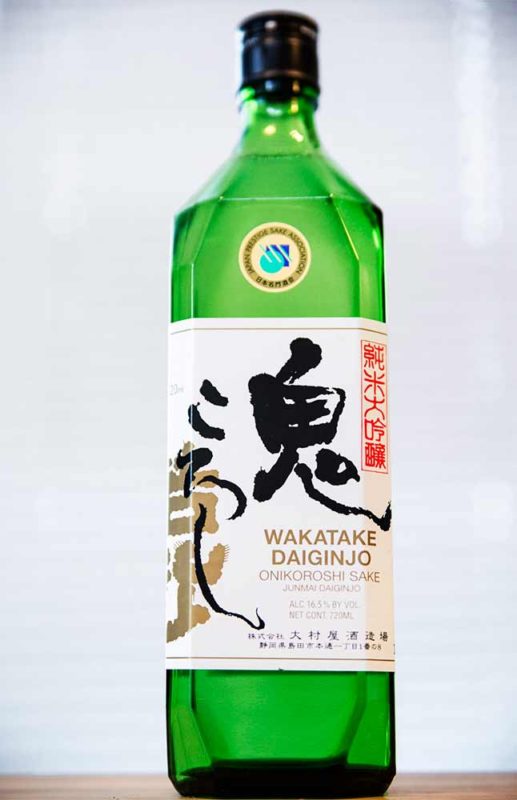
Wakatake Onikoroshi Junmai Daiginjo: Demon Slayer
Wakatake Onikoroshi Junmai Daiginjo is one of the most recognizable and memorable sake on the market. It’s aromatic, juicy, floral, and creamy. Feminine with a touch of sweetness and a seductive aesthetic, it’s no surprise that “Demon Slayer” has a loyal following.
Shop Wakatake Junmai Daiginjo
We may earn commissions from qualifying purchases.
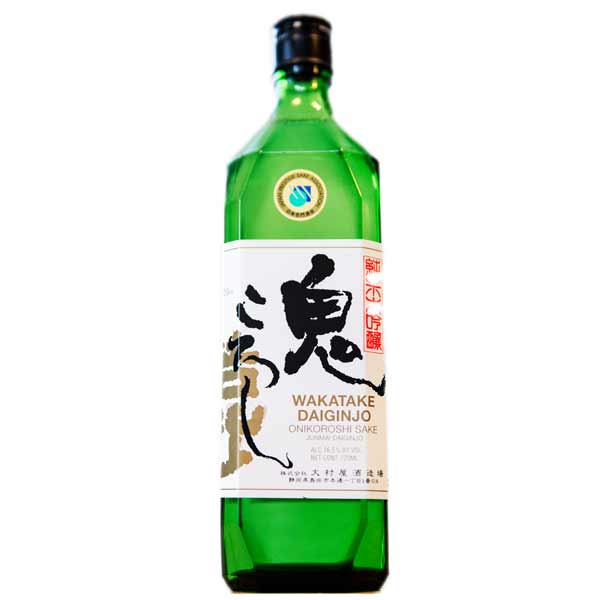
Wakatake Junmai Daiginjo Tasting Notes
Wakatake Onikoroshi (若竹鬼ころし) Junmai Daiginjo is an extremely popular brew located at the top tier of the sake food chain.
Its supple texture and rich, fruity profile make it easy to love. Demon Slayer is slightly sweet, with notes that include melon, green apple, banana, daphne, and marshmallow.
The use of Shizuoka yeast strain HD-1 is noteworthy as it provides high-key aromatics and the aforementioned silky texture. Soft well water only adds to the fruity and soft nature and also provides a sense of terroir.
This Junmai Daiginjo’s opulence (rich fruitiness) doesn’t run counter to complexity, however. Citrus and grainy notes, plus a fresh finish, add balance.
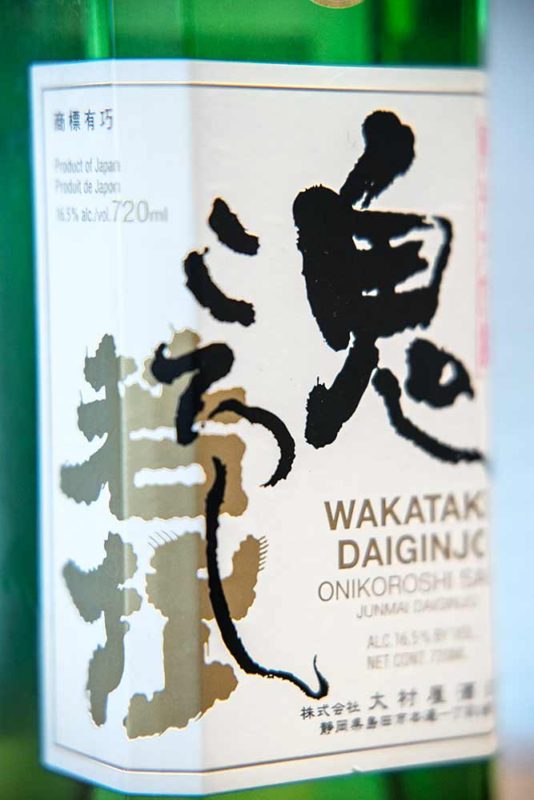
Pairing Wakatake Junmai Daiginjo
Demon Slayer makes a fine choice at the sushi bar, especially alongside sashimi. Fresh seafood is a staple of Shimada City, and it makes sense that this Junmai Daiginjo would provide a nice match.
Raw oysters can be a magical pairing with Wakatake sake. The soft and fruity sake also amplifies the umami of the oyster, while also refreshing the palate for the next.
Lightly dressed salads and dishes with fruit are also recommended.
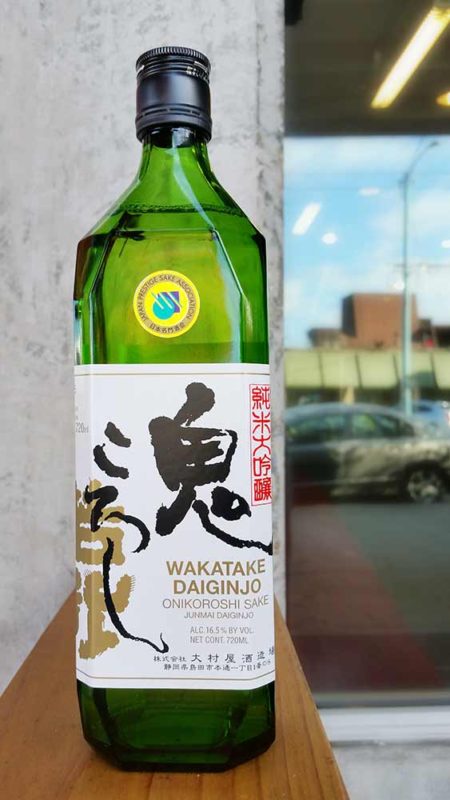
Service Suggestions: Demon Slayer Junmai Daiginjo
Serve Wakatake Onikoroshi Junmai Daiginjo chilled to just slightly chilled (41-59°F). It’s going to show well in a wide range of serving vessels. O-choko will highlight the fruit, sweetness, and compact nature. A white wine glass will provide the full tasting experience and a dryer finish. As always, larger guinomi are a good compromise.
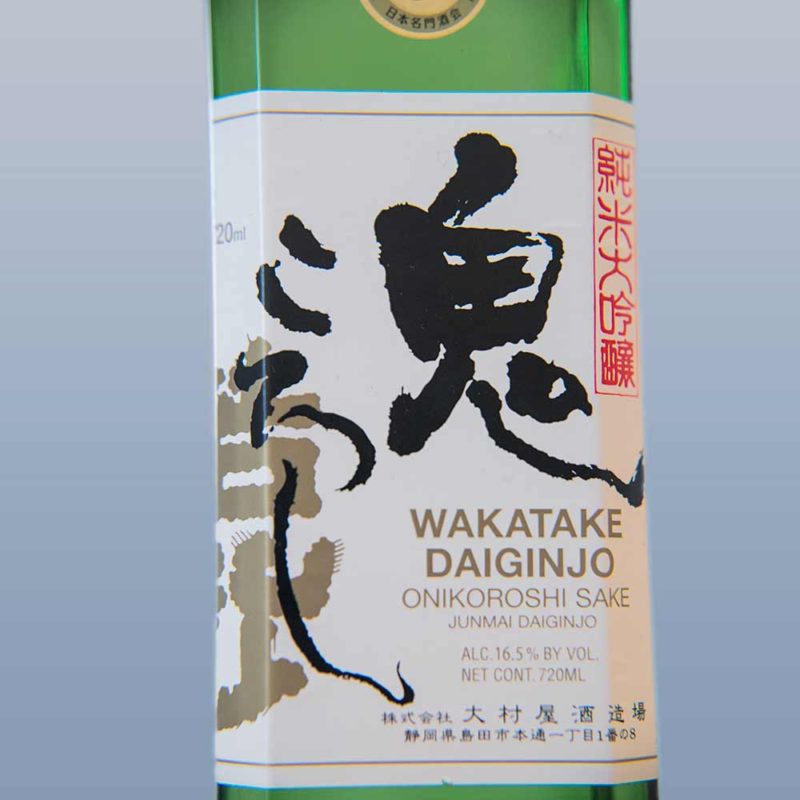
Product Information
Wakatake Onikoroshi Junmai Daiginjo “Demon Slayer”
Rice: Aichinokura milled to 48%
Yeast: Shizuoka HD-1
SMV: ±0 Acid: 1.2 to 1.4 ABV: 16.5-17%
Wakatake Onikoroshi Junmai Ginjo: Demon Slayer
Wakatake Junmai Ginjo is a popular sibling to the more famous Junmai Daiginjo. It’s also velvety and fruity, but the fruitiness is less intense and balanced by more umami.
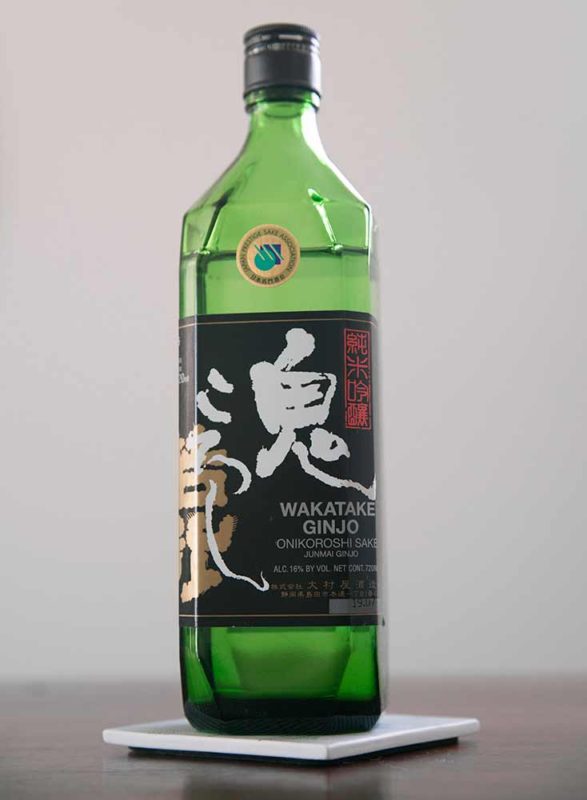
Compare Online Retailers of Wakatake Junmai Ginjo
We may earn commissions from qualifying purchases.
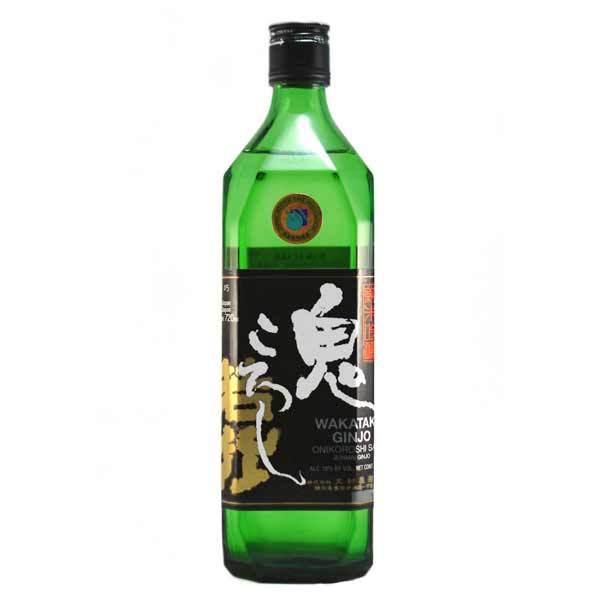
Wakatake Junmai Ginjo Tasting Notes
This Junmai Ginjo has moderate aromatic intensity with a mix of fruity, floral, and savory notes.
On the palate, Wakatake Onikoroshi Junmai Ginjo is oily, rich, and mildly sweet. This sake is medium-bodied and very smooth. It has a bright finish that makes this Demon Slayer sake seem drier after the first couple of sips.
The classic flavors of all Wakatake sakes are present: melon, green apple, and steamed rice. There are also notes of blueberry, banana, fresh flowers, and wet concrete.
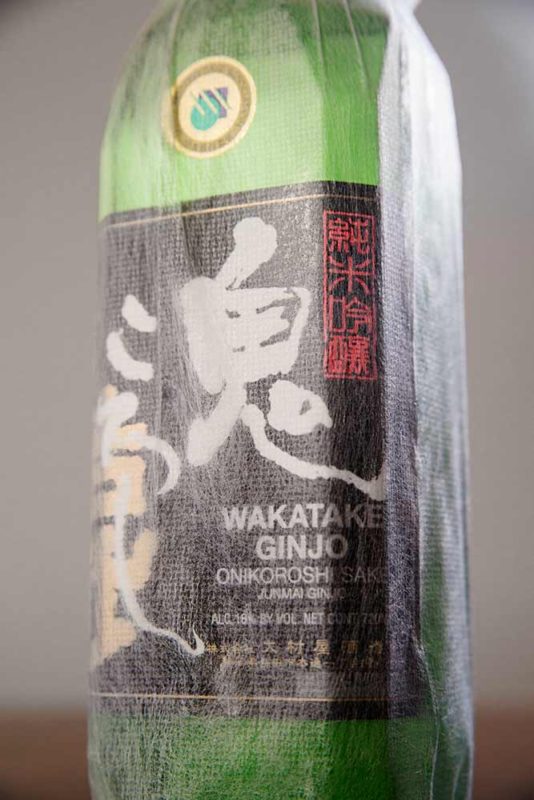
Pairing Wakatake Junmai Ginjo
Wakatake Onikoroshi Junmai Ginjo is more flexible with food pairings that its fruitier Junmai Daiginjo cousin.
Demon Slayer will match nicely with sushi and sashimi. This is especially true of oily fish or shellfish like hotategai (scallops), ama ebi (sweet shrimp), kani (crab), saba (pickled mackerel), sawara (king mackerel), sake (salmon), and gindara (black cod).
Shrimp and vegetable tempura is another dish to try. Other Japanese items that work well are hamachi (or kanpachi) kama, composted raw oysters, chicken karaage, and ankimo (monkfish liver).
In general, fried food and dishes with cream or butter are going to taste great with Wakatake Junmai Ginjo.
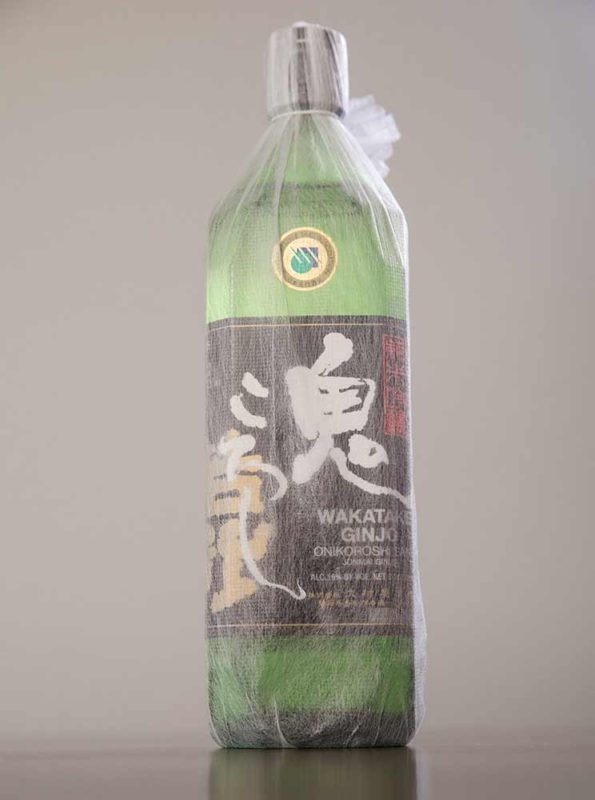
Service Suggestions for Wakatake Onikoroshi Junmai Ginjo
This Demon Slayer sake is not only more versatile with food pairings, it also can be served at a wide range of temperatures. Chilled is the most common way to serve this sake. But room temperature, or even warm, can be quite nice.
For chilled or room temperature Wakatake, a wine glass is ideal. In stemware, you’ll detect more of the aromas and the sake will taste drier and crisp.
Smaller traditional cups like ochoko will accentuate the faint sweetness of this sake. Small cups will also dampen the richness. Bigger traditional cups like guinomi are a good compromise between wine glasses and ochoko. Either of these classic cup styles is recommended for warm Wakatake.
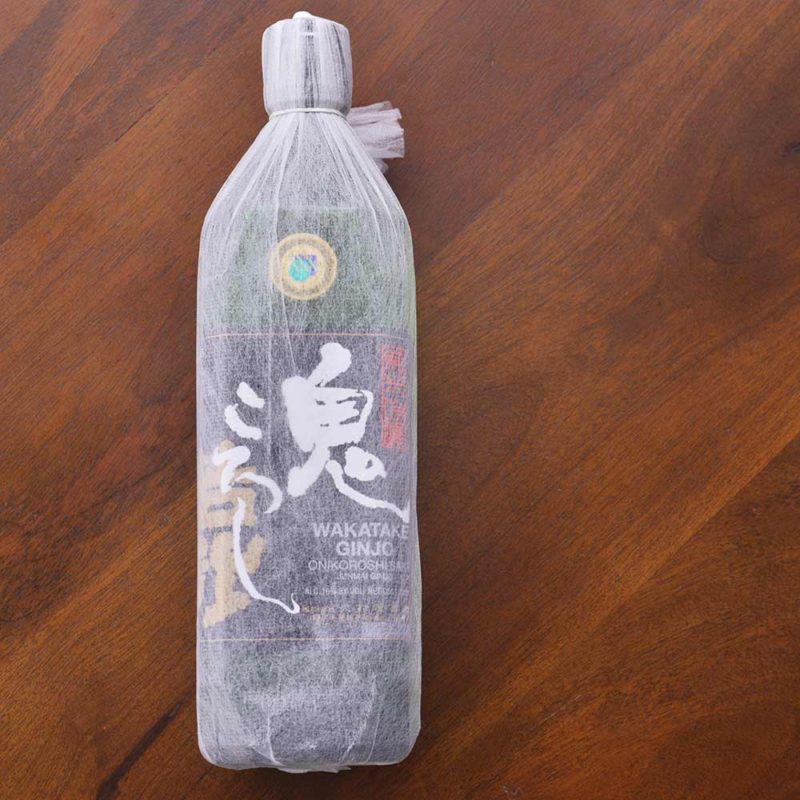
Product Information
Wakatake Onikoroshi Junmai Ginjo “Demon Slayer”
Rice: Aichinokura and Ginginga milled to 55%
Yeast: Shizuoka New #5
SMV: +3 Acid: 1.3-1.5 ABV: 16%
Wakatake Onikoroshi Tokubetsu Junmai Genshu
Of all the Demon Slayer Wakatake sakes, the Tokubetsu Junmai Genshu is the most powerful and masculine. This is a great sake to pair with food and can be served at a variety of temperatures.
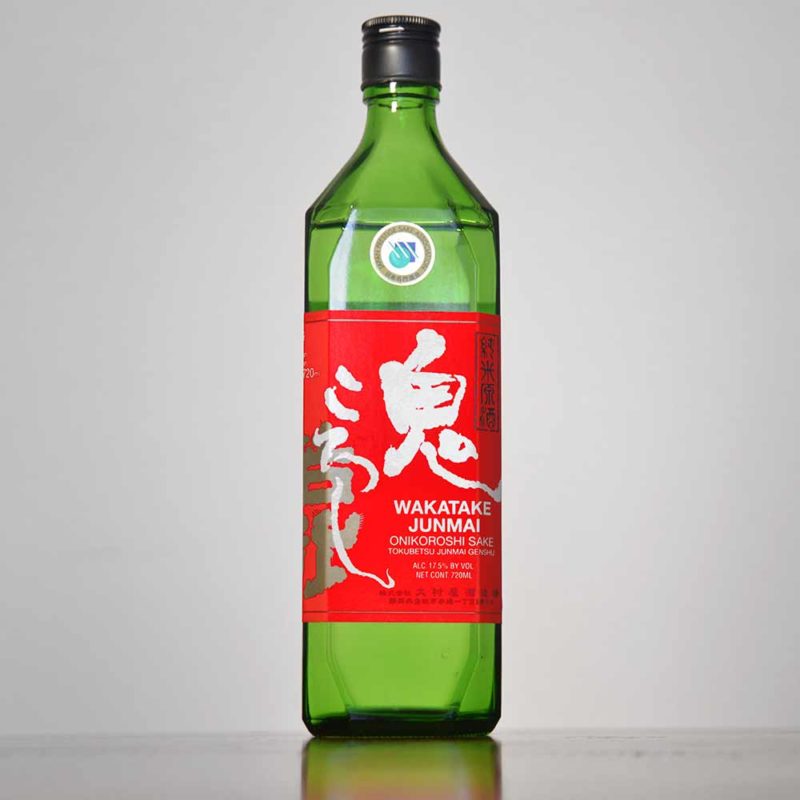
Compare Online Retailers of Wakatake Tokubetsu Junmai Genshu
We may earn commissions from qualifying purchases.
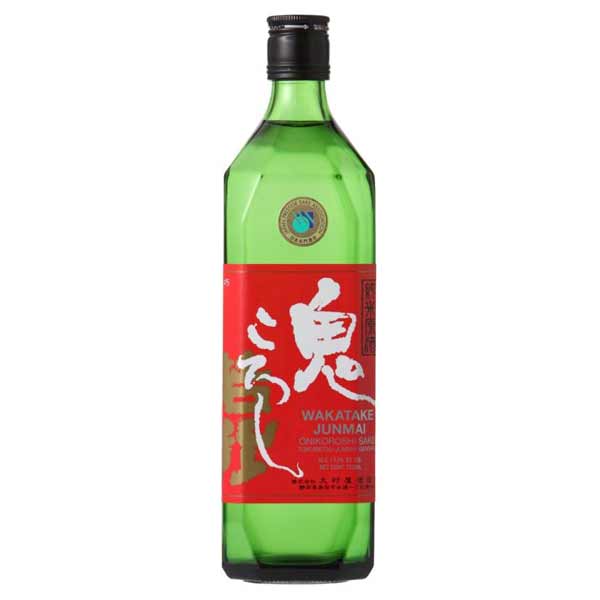
Tasting Notes for Wakatake Tokubetsu Junmai Genshu
Wakatake Tokubetsu Junmai has a bright red label that serves as a warning. This sake is a genshu, which means it’s undiluted with water. That means the final alcohol content comes in at close to 18% abv!
The aromatic intensity for this Demon Slayer sake is subdued. Some of the common Wakatake notes of melon and fresh flowers are present. But it’s earthier aromas like caramel, almond, and steamed rice that take center-stage.
This is a dry sake with a crisp finish. The texture is velvety with lactic notes. Other tasting notes include banana, green apple skin, wet concrete, and nougat.
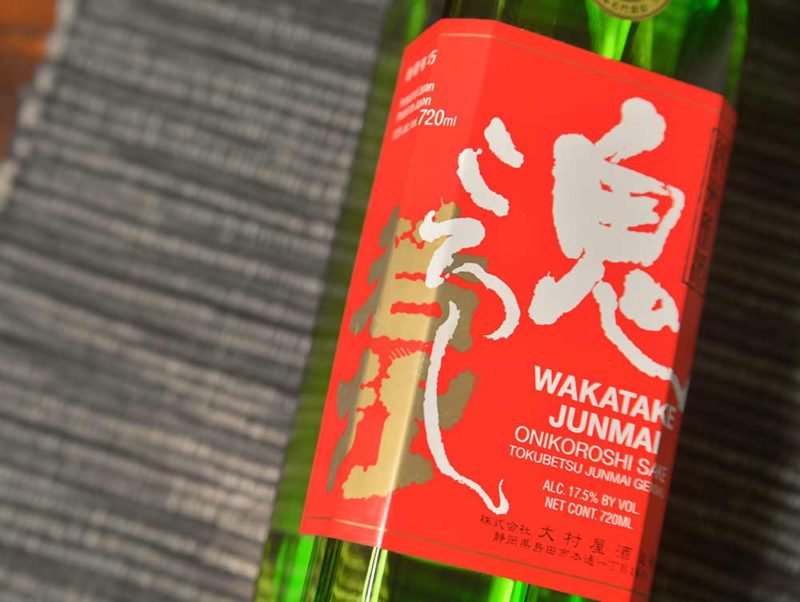
Pairing Tips for Wakatake Onikoroshi Tokubetsu Junmai
This Demon Slayer sake is fantastic with heavier-flavored Japanese dishes. Food like grilled fish collars (kama), nitsuke, aradaki, nabe, miso-based ramen, and sukiyake can all be complimented by Wakatake Tokubetsu Junmai.
Dairy-based cuisine are also a good match with Demon Slayer Tokubetsu Junmai. Many types of cheese, pizza, fettuccine alfredo, and lobster beurre blanc are delicious with this sake.
Wakatake Onikoroshi Tokubetsu Junmai: Serving Suggestions
Wakatake Onikoroshi Tokubetsu Junmai is best served from chilled to warm. Very cold temperatures are ok too, but flavors and complexity will increase when the temperature approaches a light chill.
Avoid serving this genshu hot. The alcohol becomes quite pronounced and a lot of bitter notes begin to present themselves on the palate.
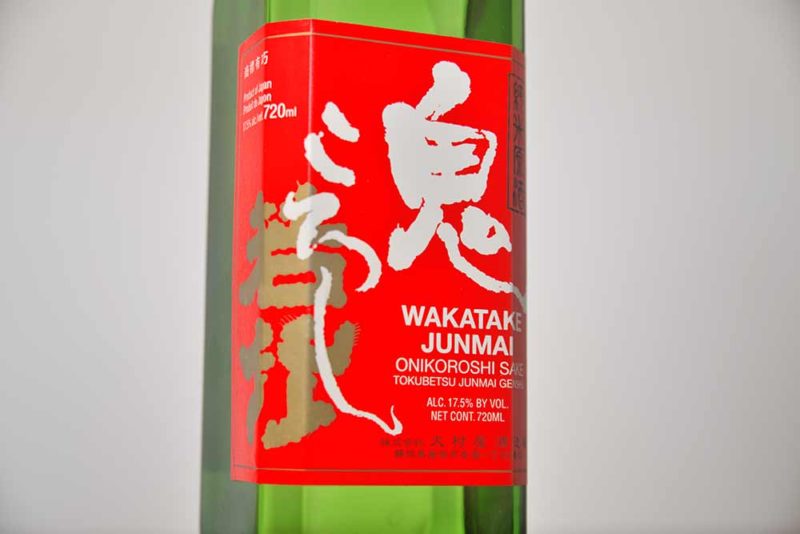
Product Information
Wakatake Onikoroshi Tokubetsu Junmai Genshu “Demon Slayer”
Rice: Gohyakumangoku milled to 60%
Yeast: unknown
SMV: +7 Acid: 1.6 ABV: 17-18%
The Oomuraya Sake Brewery
Brewery: Oomuraya Shuzo (大村屋酒造場) Location: Shimada, Shizuoka
EST: 1832
Oomuraya Brewery is well known for its Wakatake Onikoroshi (若竹鬼ころし) line. They start with soft well water, with roots from the Ooi River (大井川). They also mill their own rice and brew in small batches to ensure a high-quality sake. To combat Shimada’s warm and maritime climate, the brewers go to great lengths to ensure that brewing and storage temperatures remain optimal.

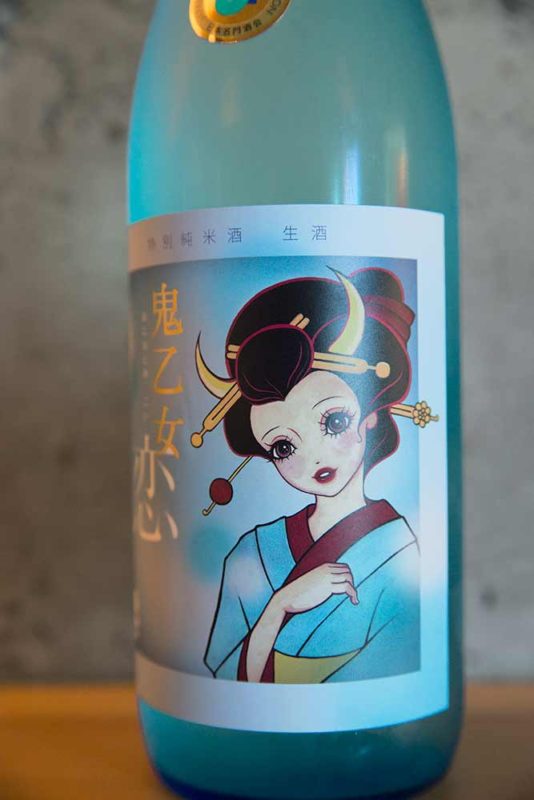
Follow the Japanese Bar on Social Media
Connect with our latest posts, the newest Japanese beverage info, and get exclusive promotional offers. Level-up your sake IQ!
